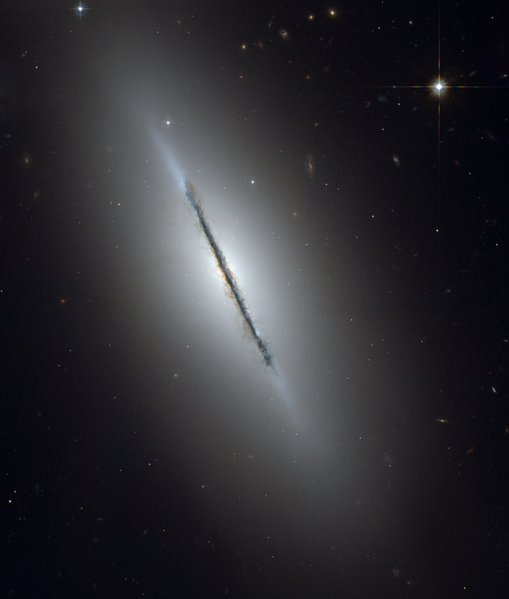Slika:Ngc5866 hst big.png
Videz

Velikost tega predogleda: 509 × 599 točk. Druge ločljivosti: 204 × 240 točk | 408 × 480 točk | 652 × 768 točk | 870 × 1.024 točk | 1.739 × 2.048 točk | 3.190 × 3.756 točk.
Izvorna datoteka (3.190 × 3.756 točk, velikost datoteke: 25,78 MB, MIME-vrsta: image/png)
Zgodovina datoteke
Kliknite datum in čas za ogled datoteke, ki je bila takrat naložena.
| Datum in čas | Sličica | Velikost | Uporabnik | Komentar | |
|---|---|---|---|---|---|
| trenutno | 19:38, 16. februar 2009 |  | 3.190 × 3.756 (25,78 MB) | Spencer | {{Information |Description={{en|1=From original NASA press release: :This is a unique view of the disk galaxy en:NGC 5866 tilted nearly edge-on to our line-of-sight. Hubble's sharp vision reveals a crisp dust lane dividing |
Uporaba datoteke
Datoteka je del naslednjih 2 strani slovenske Wikipedije (strani drugih projektov niso navedene):
Globalna uporaba datoteke
To datoteko uporabljajo tudi naslednji vikiji:
- Uporaba na ab.wikipedia.org
- Uporaba na ace.wikipedia.org
- Uporaba na af.wikipedia.org
- Uporaba na af.wikibooks.org
- Uporaba na af.wikiquote.org
- Uporaba na af.wiktionary.org
- Uporaba na ak.wikipedia.org
- Uporaba na als.wikipedia.org
- Uporaba na am.wikipedia.org
- Uporaba na am.wiktionary.org
- Uporaba na ang.wikipedia.org
- Uporaba na ang.wiktionary.org
- Uporaba na an.wikipedia.org
- Uporaba na an.wiktionary.org
- Uporaba na arc.wikipedia.org
- Uporaba na ar.wikipedia.org
- Uporaba na ar.wikibooks.org
- Uporaba na ar.wikinews.org
- Uporaba na ar.wikiquote.org
- Uporaba na ar.wikisource.org
- Uporaba na ar.wikiversity.org
- Uporaba na ar.wiktionary.org
- Uporaba na arz.wikipedia.org
- Uporaba na ast.wikipedia.org
- Uporaba na ast.wiktionary.org
- Uporaba na as.wikipedia.org
- Uporaba na av.wikipedia.org
- Uporaba na ay.wikipedia.org
- Uporaba na az.wikipedia.org
- Uporaba na az.wikibooks.org
- Uporaba na az.wikiquote.org
- Uporaba na az.wikisource.org
- Uporaba na az.wiktionary.org
- Uporaba na bat-smg.wikipedia.org
- Uporaba na ba.wikipedia.org
- Uporaba na bcl.wikipedia.org
- Uporaba na be-tarask.wikipedia.org
- Uporaba na beta.wikiversity.org
- Uporaba na be.wikipedia.org
- Uporaba na be.wikibooks.org
Oglejte si globalno uporabo te datoteke.

